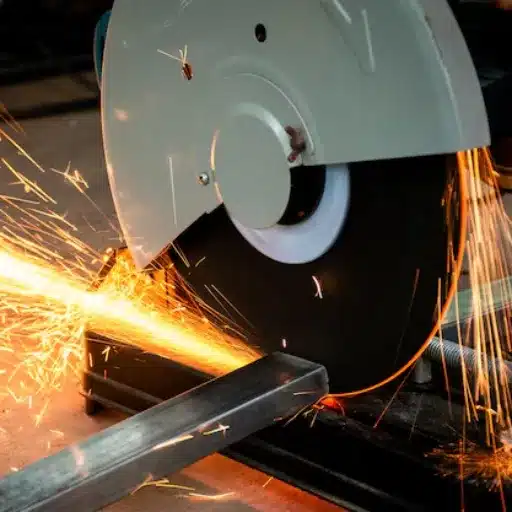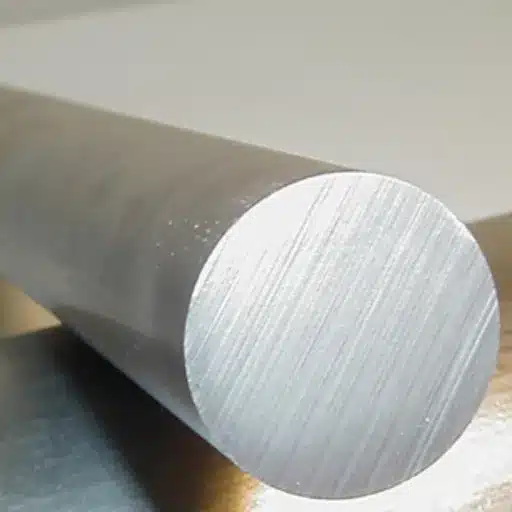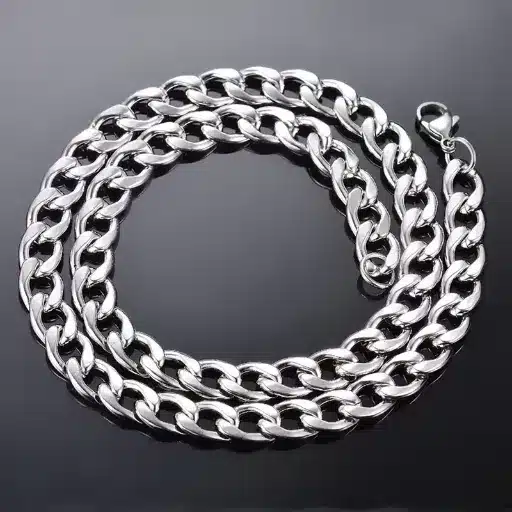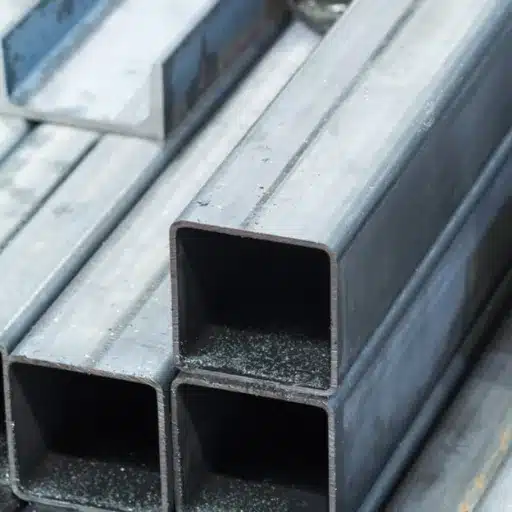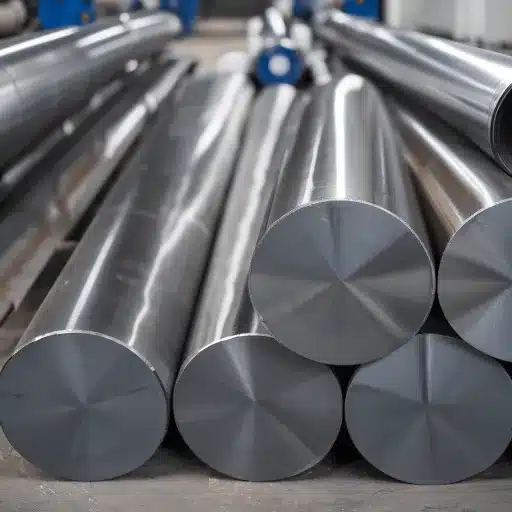Like any other cooking material, the material used in flatware and kitchen tools will directly impact its safety, durability, and performance in the kitchen. Of the many available options, 18/0 stainless steel seems one of the most common and inexpensive choices. This blog post aims to help you appreciate the intricacies of 18/0 stainless steel, including its composition and advantages compared to other grades of stainless steel. We will also explain how 18/0 stainless steel is used in flatware and cookware and provide tips on selecting the right kitchen equipment. If you are a home chef or hobbyist wanting to renew your tableware, you will be well-acquainted with the 18/0 stainless steel world by the end of this post.
What is 18/0 Stainless Steel, and How Does it Compare to Other Types of Stainless Steel?
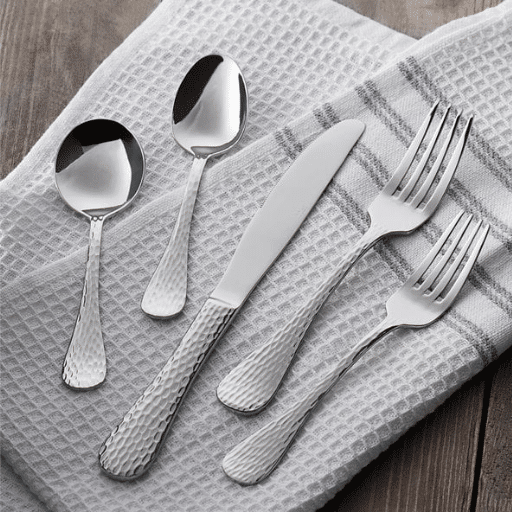
18/0 stainless steel is a variety of stainless steel with a constitution of 18% chromium and no nickel. This composition makes it less resistant to rust and corrosion compared to other grades like 18/8 or 18/10, which have chromium and nickel. Despite these deficiencies, the lack of nickel makes 18/0 affordable and hypoallergenic, which is ideal for those allergic to nickel. 18/0 stainless steel has less durability and shine than higher nickel content grades; however, it is widely used in making flatware and kitchen utensils because of its strength and economy.
Understanding the Numbers: Chromium and Nickel Content
From my inquiry, “18/0” in stainless steel refers to the chromium and nickel content – 18% of Chromium and 0% of Nickel. Compared to other metals, stainless steel “18/0” has moderate corrosion resistance due to chromium, but with the nickel absent, it is more affordable and hypoallergenic. In nickel-added varieties, “18/8” or “18/10” stainless steel containing nickel offers extra durability and shine. At the same time, “18/0” is considered an economical yet practical choice for substantial magnesium flatware or utensils.
How 18/0 Stainless Steel Differs from 18/8 and 18/10
The distinctive features of 18/0, 18/8, and 18/10 stainless steel rest upon their composition and characteristics:
- 18/0 Stainless Steel: It includes chromium in the proportion of 18 percent and does not contain any nickel. Although it is corrosion resistant, due to the presence of chromium, it lacks the shine and additional strength due to the absence of nickel. In comparison to others, nickel free makes it hypoallergic as well as lower priced, hence it is preferred by people with nickel allergic or cheap items.
- 18/8 Stainless Steel: Nickel is added in the proportion of 8%. With the inclusion of nickel, the metallic strength, rust, and corrosion resistance are increased, and a better look is also provided. This material is considered in the making of better-quality kitchen utensils and cutlery used in dining.
- 18/10 Stainless Steel: Nickel is included at 10%, and 18% chromium remains the same. Due to this specific combination, it possesses amped-up strength and corrosion resistance with an improved appearance over 18/8. It is considered the best choice for luxurious flatware, pots, and pans.
By altering the nickel content, these materials are expected to undergo changes in costs, appearance, and performance. 18/0 is preferred for applications where cost and nickel content need to be minimized, while 18/8 and 18/10 are premium products with an aesthetic and performance boost.
Properties of 18/0 Stainless Steel
18/0 stainless steel is made from approximately 18% chromium and 0% nickel, making it a less expensive and free of nickel material. The lack of nickel makes this material more prone to corrosion than the 18/8 or 18/10 grades. However, this is beneficial for those sensitive or allergic to nickel.
Some key characteristics of 18/0 stainless steel are:
- Corrosion Resistance: This grade of stainless steel has moderate resistance to rust and corrosion, making it best suited for low moist or acid-exposed conditions.
- Magnetism: 18/0 stainless steel is magnetic because of its ferritic structure, which differs from austenitic grades like 18/8 or 18/10.
- Durability: This grade of stainless steel is not as durable as higher-grade stainless steel, but it is durable enough for general-purpose materials and does not bend or break easily under average use.
- Cost-Effectiveness: The absence of nickel helps make stainless steel, making it ideal for low-cost purposes.
- Appearance: The chromium helps provide a bright and reflective finish, but it does not have the luster and shine of nickel-containing grades.
The most common uses of 18/0 stainless steel include cutlery, kitchen tools, and other household products where low-cost and non-nickel properties are needed.
Is 18/0 Flatware a Good Choice for Your Kitchen?
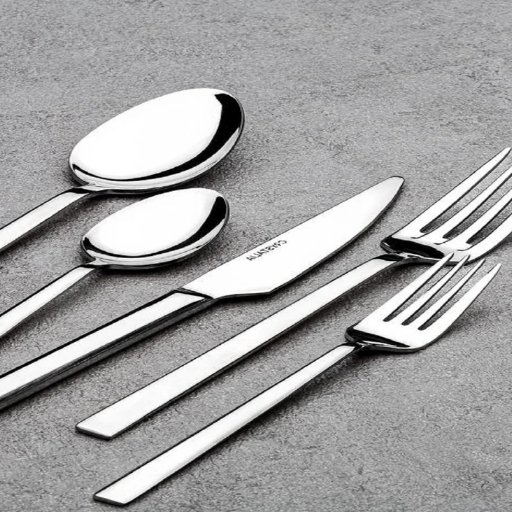
18/0 stainless steel flatware is an excellent option for those looking for a low-cost choice that does not contain nickel, particularly those with allergies. It is practical, strong, and flexible for daily use, which suits budget-sensitive families. If long-term resistance to corrosion and surviving with a highly polished finish is of the utmost importance, the user may find higher chromium or nickel alternate stainless steel grades to be better. In the long run, it is a matter of personal choice and circumstances.
Pros and Cons of 18/0 Stainless Steel Flatware
As for me, the first thing that pops into my mind when I think of 18/0 stainless steel flatware is that it is cheap and nickel-free, which is a plus for people with nickel allergies. It is also tough enough to stand up to the rigors of everyday use, so it is a good option for most families or budget-conscious individuals. On the negative side, 18/0 flatware does not withstand rusting or corroding as much as nickel-containing ones, like 18/10 or 18/8. In addition, it can become less shiny with age, posing a challenge for those wishing to maintain an exquisite polished look for their flatware. Ultimately, it is a good option if cost and having a nickel allergy are issues, but it will not likely meet everyone’s expectations in the long run.
Medium Weight vs. Heavy Weight 18/0 Flatware Sets
Your intended use of the 18/0 flatware sets should inform whether you choose medium or heavy weight. Medium-weight flatware is easier to manage and ideal for light meals and children’s use. In contrast, heavy-weight flatware has a superior feel and is perfect for formal occasions or those who enjoy a sturdy grip. The weight disparity is usually linked to the thickness, around 2-2.5 mm for medium and 3-4 mm for heavy weight. If your preference relies on resistance to bending and a sturdier feel, then the heavyweight is your go-to. But, if you need an affordable, versatile option for daily use, medium weight will suffice.
Best 18/0 Flatware Sets on the Market
When selecting high-quality flatware like 18/0 grade, it is crucial to consider the set’s design, durability, and practicality all at once. Having analyzed the most popular sets from the leading websites, below are three recommendations with their salient features and other specifications:
- Royal Flatware Set (45-Piece)
- Material: 18/0 stainless steel (nickel-free, does not corrode)
- Finish: Mirror polishing on the surface, providing stylish refinement
- Thickness: 2.5 mm (mid-range weight)
- Durability: Can be washed in a dishwashing machine, does not bend easily
- Included Pieces: Serving circa 8 (with forks, knives, spoons and serving cutlery)
- Why Choose It: Good for daily and occasional use at a pocket-friendly cost.
- Lenox Portola 65 Piece Flatware Set
- Material: 18/0 stainless steel (Does not rust and has a shine)
- Finish: Mirror finishing in contemporary style.
- Thickness: 3 mm (weighty and strongly felt)
- Durability: Easy maintenance: resistant to rust and can be washed in a machine.
- Included Pieces: Serving circa 12, with extra serving cutlery: slotted spoon, butter knife, etc.
- Why Choose It: Great for large families or guests; beautifully stunning but strongly constructed.
- LIANYU Matte Black Flatware Set (20-piece)
- Material: 18/0 stainless steel (safe for food use, does not corrode)
- Finish: Modern, sophisticated matte black coating.
- Thickness: 2mm (light and easy to maneuver)
- Durability: The dishwasher can wash it; the coating does not fade.
- Included Pieces: Serving of four (Forks, spoons ,and knives)
- Why Choose It: Stylish, supreme flatware in a small set.
These sets range from affordable to lavish and cater to different requirements. These options set the standard for 18/0 flatware in terms of style, weight, and durability. Always consider practicality alongside quality. Remember to take into account factors such as the number of people in your household, intended usage, and preferred aesthetics when making the selection.
How resistant is 18/0 stainless steel to corrosion and rust?
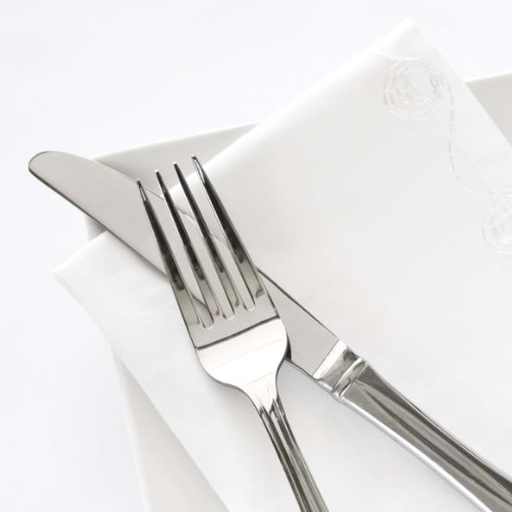
Due to the presence of chromium in 18/0 stainless steel, it is moderately resistant to rust and corrosion since it forms a protective layer. The absence of nickel makes this type of steel more susceptible to rusting in wet or acidic conditions compared to 18/8 or 18/10 grade stainless steel. Proper maintenance, such as thorough drying and minimizing exposure to moisture, can aid in increasing its lifespan.
Factors Affecting 18/0 Stainless Steel’s Corrosion Resistance
From my research, the most significant factors for 18/0 stainless steel’s reduced corrosion resistance are the lack of nickel, contact with moisture, and other environmental factors. The lack of nickel mitigates the ability to resist corrosion compared to different grades of stainless steel, such as 18/8 and 18/10. Containment with water for a long time, particularly in damp conditions, will speed up the rate of rusting. In addition, acidic or saline exposure can destroy the protective chromium oxide layer. To counter these problems, I suggest complete drying of the material post-use, utilizing softer chemicals, and storing it in dry conditions.
Tips to Prevent Rust on 18/0 Stainless Steel Utensils
- Maintaining Cleanliness is Crucial
Utensils should be washed immediately after use with warm water and mild soap. Avoid using scrubbing tools, as they can scratch and erode the protective chromium oxide layer. Use a soft cloth to wipe thoroughly so there are no water spots or further rust formation.
- Avoid Leaving Utensils Wet For Too Long
Avoid soaking the utensils in water for too long, as this increases the chances of oxidation. If you use a dishwasher, remove the utensils directly after the wash cycle and ensure that they are dried right away.
- Stainless steel corrosion should be the least of your worries
The most corroding substances, salt, and acidic foods should be rinsed off from stainless steel utensils as quickly as possible because they damage them. You would not want corrosion to be the reason for the utensil’s destruction.
- Use Protective Coating When Possible
For moisture protection purposes, it is advised to apply a thin coat of food-grade rust inhibitor when utensils are not in use in coastal or humid regions. This method proves beneficial for these types of utensils.
- Store in a dry environment containing low humidity.
Storing utensils in properly ventilated and dry regions facilitates their longevity. Adding a dehumidifier packet would provide extra caution against rusting when the utensils are in storage.
- Electropolishing Option
Electropolishing enhances the protective corrosion resistance by rounding the microscopically developed grooves in the stainless steel’s surface and strengthening the chromium’s underlying oxide layer. This is very useful for stubborn stains and for cancer or surgical utensils.
Key Parameters for Electropolishing:
- Voltage: Between 8V to 15V DC.
- Current Density: 10-20 amps per square decimeter.
- Temperature: 120°F to 150°F (49°C to 65°C).
- Duration: 2-10 minutes, depending on surface condition.
- Avoid Harsh Chemicals
Do not attempt to use bleach or chlorine compounds, as these cleaners will hasten the degradation of the stainless steel surface, resulting in corrosion.
Implementing these strategies and taking proper care of your 18/0 stainless steel utensils will ensure that they last longer while preserving their aesthetic value and usability.
Is 18/0 Stainless Steel Dishwasher Safe?
Yes, 18/0 stainless steel is classified as dishwasher safe. However, vigorous hand washing is recommended for prolonged use. The absence of nickel makes 18/0 stainless steel susceptible to corrosion and discoloration from aggressive detergents and moisture during and after the dishwashing cycle. Technical considerations include not exceeding the dishwasher’s high temperature of 150F (65C) and using mild, non-abrasive detergents to reduce damage. Ensuring rapid drying of washed articles will further aid in reducing possible corrosion.
Can You Use 18/0 Stainless Steel for Cooking?
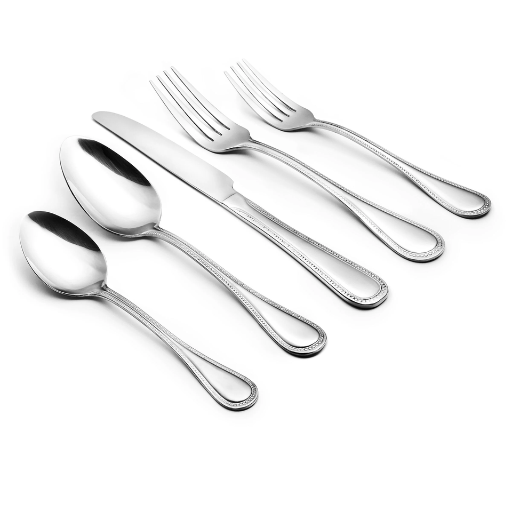
Yes, the 18/0 stainless steel is safe for food contact as well as flatware and cookware; its exposed use in food matters is controlled; the lack of nickel composition in this mix makes it less durable to corrosion compared to the 18/8 or 18/10 grade stainless steel, Rusting is typical for this particular type of stainless unless regularly maintained after use. For best results, avoid prolonged exposure to moisture and use low to moderate temperatures for cleaning.
18/0 Stainless Steel Cookware: Pots and Pans
I argue that 18 / 0 stainless steel pots and pans could serve essential cookware needs quite adequately, but they have downsides. These types of stainless steel are less expensive and safe to cook with because of the lack of nickel, but this means they possibly do not last as long as higher-grade stainless steel options. I believe that if they are not properly maintained, they have a chance of corroding. To mitigate these problems, I always dry them properly and not expose them to excessive heat or acidic foods for a prolonged period. Decent care allows them to perform well for everyday usage at low to medium heat levels.
Food Safety Concerns with 18/0 Stainless Steel
Based on my research, 18/0 stainless steel is considered safe for cooking, although there are some considerations to consider. Its lack of nickel means it is less corrosion resistant, which poses the risk of releasing small amounts of chromium or iron into food if the cookware is corroded or pitted. I avoid cooking for prolonged periods in 18/0 stainless steel with highly acidic or salty foods to mitigate this risk. Furthermore, I always check for signs of damage or general wear and tear; if needed, the cookware is replaced. Maintenance includes cleaning the cookware properly and adequately using harsh abrasives to ensure it is used safely and effectively.
How to Care for 18/0 Stainless Steel Kitchen Utensils and Flatware
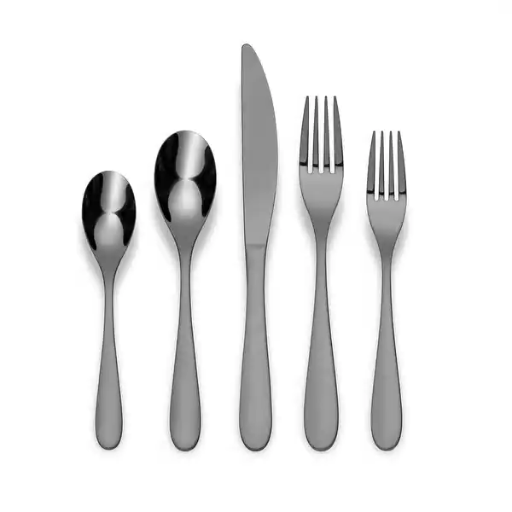
Maintenance of 18/0 stainless steel utensils and flatware is crucial for its durability and appearance. Start by washing the utensils as soon as possible after use. Use warm water, soap, and a soft cloth or sponge to remove food residues. It is best to avoid abrasive scouring pads or harsh cleaners, which may scratch the surface of the utensils. If some utensils become stained or discolored, gently scrubbing them with baking soda and water can restore their shine and color. After washing the utensils, it is essential to dry them immediately to prevent water spots and corrosion. It is best to keep utensils in a dry place to minimize exposure to acidic or salty foods. Regular maintenance allows you to keep your 18/0 stainless steel utensils in excellent shape for years.
Cleaning and Maintenance Best Practices
- What is the cleaning procedure for 18/0 stainless steel utensils?
For best results, wash immediately with warm, soapy water and a soft cloth or sponge, as tougher stains may require baking soda and water mixtures.
- Are abrasive cleaners permitted?
All-purpose scouring pads or other aggressive cleaners should be avoided, as these can irreparably damage the surface.
- What measures can be taken to treat discoloration or staining?
To restore shine, gently polish with a paste made out of baking soda and water.
- How can one minimize the formation of water spots and corrosion on the utensils?
Utensils can be avoided from rusting by being immediately dried after washing and stored in a dry place.
- What is the level of contact that should be observed with some acidic or salty foods?
Salt and acid food should not be left in contact with flatware for prolonged periods, as this can cause corrosion.
- Where should the utensils be stored?
Flatware should be stored in a moisture-free area to avoid rust formation.
With reasonable care, these tips ensure that the 18/0 stainless steel flatware retains its quality and longevity.
Extending the Life of Your 18/0 Flatware Set
To increase the durability of my 18/0 stainless steel flatware set, I make sure to utilize a few rather basic methods:
- Cleaning Practices
As a rule, I don’t use abrasive scouring pads or strong cleaners, as those will scratch or dull the surface of the flatware. I wash it by hand with mild dish soap and warm water, or I put it in the dishwasher following the manufacturer’s instructions.
- Preventing Stains and Discoloration
If stains and discoloration exist, I will polish it with baking soda and water paste, which usually restores shine. For more challenging spots, white vinegar does the trick for stainless steel.
- Avoiding Corrosion
After washing, I dry the flatware immediately with a soft cloth to avoid water spots and corrosion. Leaving them wet can cause spotting or tarnishing over time.
- Handling Acidic and Salty Foods
I make it a point to promptly rinse the flatware with water before washing it to remove any salty or acidic residue, as prolonged exposure to those elements will result in corrosion.
- Proper Storage
Silica gel packets can be stored with flatware to help absorb moisture, and drawers and flatware organizers that store flatware without allowing dampness can also be utilized. It is very important for me to have no moisture where I store the flatware.
Technical Notes:
- 18/0 Composition
Dishes that can be afforded easily have 0% nickel and contain 18% chromium for rust resistance. Consequently, they are not as economical as the ones that do have some nickel because they are more likely to rust.
- Water Hardness
While soft water is good, hard water can remove the shine due to mineral deposits, making flatware difficult to clean. A rinse aid used in a dishwasher improves the appearance of water spots, so it is advisable to use one.
With these strategies, my dining needs are well met for a long time since the quality of my 18/0 stainless steel flatware is retained.
Is 18/0 Stainless Steel Food Safe?
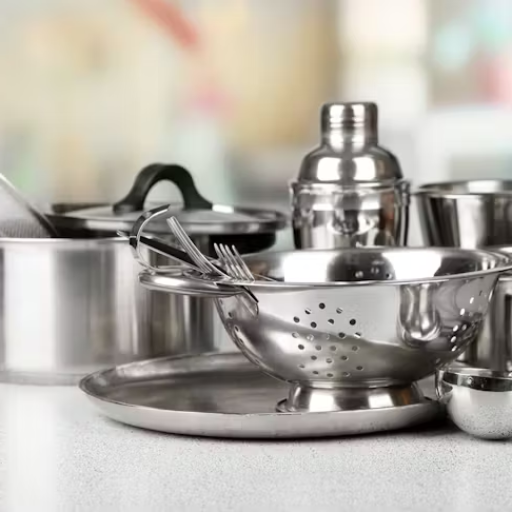
Yes, 18/0 stainless steel is considered food-safe. It is widely used for flatware and kitchen tools because it does not leach harmful chemicals into food. The lack of nickel also makes it a good option for those with nickel allergies. However, its lower corrosion resistance compared to higher-grade stainless steel requires proper care to maintain its safety and quality over time.
Understanding 18/0 Stainless Steel’s Composition and Food Safety
From my understanding, 18/0 stainless steel is safe for food use due to its approximately 18% chromium and 0% nickel composition. The 18% chromium is essential for corrosion resistance and durability, while the absence of nickel makes it hypoallergenic and suitable for individuals with nickel sensitivities. However, its lower nickel content means it is less rust-resistant than higher-grade stainless steels like 18/8 or 18/10.
Proper care is important to ensure food safety and maintain its quality. Avoid prolonged exposure to acidic or salty environments, and always dry thoroughly after washing to prevent potential corrosion. Its technical parameters, such as 18% chromium content and tensile strength typical of ferritic stainless steels, make it an affordable, practical choice for flatware and various kitchen tools, provided it is maintained correctly.
Commonly Used 18/0 Stainless Steel Kitchen Items
From my research, 18/0 stainless steel is commonly used in kitchen items such as cutlery, including forks, knives, and spoons, due to its hypoallergenic properties and affordability. It is also found in flatware sets designed for everyday use and in specific baking tools like cookie sheets, where its ability to resist warping under heat is advantageous. However, because it is less rust-resistant, these items often require proper maintenance to ensure longevity.
References
- WebstaurantStore: Types of Flatware – Discusses the composition and characteristics of 18/0 stainless steel flatware.
- Crystalia USA: Differences Between 18/10, 18/8, and 18/0 Stainless Steel – Explains the differences between various stainless steel types, including 18/0.
- Silver Superstore: Stainless Flatware Quality Differences – Provides insights into the quality and composition of stainless steel flatware.
Frequently Asked Questions (FAQ)
Q: What is 18/0 stainless steel and how does it compare to other types of stainless steel?
A: 18/0 stainless steel is a type of stainless steel that contains 18% chromium and 0% nickel. This is one of the most commonly used types of steel in flatware and cooking utensils. The numbers in stainless steel designations (18/0, 18/8, or 18/10) represent the alloy’s percentage of chromium and nickel. While 18/0 stainless steel is resistant to corrosion, it’s generally less resistant to corrosion than 18/8 or 18/10 stainless steel, which contains 18% chromium and 8% or 10% nickel, respectively. The differences between these three grades of stainless steel mainly relate to durability, appearance, and price point.
Q: Is 18/0 stainless steel flatware good quality for everyday use?
A: 18/0 stainless steel flatware is generally considered good quality for everyday use, especially if you’re looking for budget-friendly options. While it may not be considered the best flatware in terms of premium quality, it offers decent durability and functionality. 18/0 flatware tends to be more affordable because it doesn’t contain nickel. It’s typically available in light to medium-weight flatware options. For those concerned about nickel allergies, 18/0 stainless steel is also preferable. However, it may be more susceptible to rust and corrosion over time than higher-grade stainless steel options containing nickel.
Q: How durable are knives, forks, and spoons made from 18/0 stainless steel?
A: Knives, forks, and spoons made from 18/0 stainless steel are reasonably durable for everyday use. The durability of 18/0 stainless steel cutlery depends mainly on its weight and manufacturing quality. Heavier-weight flatware tends to be more durable regardless of the type of stainless steel used. While 18/0 flatware might bend more readily than higher-grade options if it’s lightweight, a good quality 18/0 set can last for many years with proper care. The knife in an 18/0 set is often the most durable piece since knives are frequently made with higher-carbon stainless steel for better cutting performance, regardless of the grade used for the rest of the set.
Q: Can I use 18/0 stainless steel for cooking, and how does it perform?
A: 18/0 stainless steel is less commonly used for cooking utensils and cookware than 18/8 or 18/10 grades. For stainless steel cooking applications, manufacturers typically prefer higher nickel content grades because they offer better heat distribution and resistance to corrosion at high temperatures. When 18/0 stainless steel is used in cookware, it may be more prone to discoloration and potential rust spots, especially when exposed to acidic foods or prolonged moisture. However, it can still be functional for specific cooking tools and budget cookware options. For best results with stainless steel cookware, many professionals recommend 18/10 grade for its superior steel properties in cooking applications.
Q: How should I care for my 18/0 stainless steel flatware to prevent rust and corrosion?
A: To care for 18/0 stainless steel flatware and prevent rust and corrosion, follow these guidelines: Always rinse your cutlery promptly after use, especially after contact with acidic foods like tomatoes or citrus. Hand wash when possible with mild detergent, or if using a dishwasher, remove and hand dry immediately after the cycle completes. Avoid soaking 18/0 flatware for extended periods. Don’t use abrasive cleaners or steel wool, which can damage the protective surface. Store flatware in a dry place, and consider using anti-tarnish cloths or strips in your flatware drawer. Periodically polish with a stainless steel cleaner to remove any spots or beginning signs of corrosion. With proper care, even though 18/0 steel is less corrosion-resistant than higher nickel-content grades, it can remain attractive and functional for many years.
Q: What are the advantages and disadvantages of 18/0 stainless steel compared to 18/10?
A: The advantages of 18/0 stainless steel include: lower cost, making it more budget-friendly; it’s nickel-free, which is ideal for people with nickel allergies; it tends to be lighter weight, which some users prefer; and it’s typically more magnetic, which can be advantageous for specific applications. The disadvantages compared to 18/10 include lower resistance to corrosion and rust; a less lustrous appearance that may dull faster; generally less durable with a potentially shorter lifespan; more susceptible to spotting and staining; and often available only in lighter or medium-weight flatware rather than heavyweight flatware options. Both types of steel are commonly used, but 18/10 is generally considered premium,m while 18/0 is more economical, making the choice dependent on your specific needs, budget, and preferences.
Q: Is 18/0 stainless steel magnetic, and why does this matter?
A: 18/0 stainless steel is typically magnetic because it lacks nickel, a non-magnetic element. This magnetic property matters for several reasons. First, use magnetic knife strips or magnetic storage solutions with your 18/0 utensils. Second, the magnetic property is often used as a quick test to differentiate between 18/0 and higher nickel-content stainless steel (like 18/8 or 18/10), as the latter are usually less magnetic or non-magnetic. Third, magnetic properties are essential for induction cooking since induction cooktops only work with magnetic cookware. However, it’s worth noting that magnetism alone doesn’t necessarily indicate quality – it’s simply one of the steel’s properties that varies based on composition. The numbers don’t tell the whole story about quality, as manufacturing processes and overall construction are equally important.
Q: What does the “18” in 18/0 stainless steel represent?
A: The “18” in 18/0 stainless steel represents the percentage of chromium in the alloy, precisely 18%. Chromium is the key element that makes stainless steel “stainless” – it creates an invisible surface layer that prevents rust and corrosion. This is why stainless steel contains 18% chromium at a minimum across different grades. The second number (0 in this case) indicates the percentage of nickel in the alloy. So, 18/0 stainless steel cast with 18% chromium and 0% nickel is more accurately called “chrome stainless steel.” By comparison, 18/8 contains 18% chromium and 8% nickel, while 18/10 contains 18% chromium and 10% nickel. Higher nickel content generally increases corrosion resistance, especially to acidic substances, and gives the steel a more silvery appearance with better resistance to discoloration.
Q: Can 18/0 stainless steel flatware go in the dishwasher safely?
A: 18/0 stainless steel flatware can technically go in the dishwasher, but it requires more care than higher-grade stainless steel. Since this type of stainless steel is less corrosion-resistant, follow these guidelines for dishwasher use: Use mild detergent specifically designed for stainless steel; avoid lemon-scented or highly acidic detergents. Remove and hand dry immediately after the cycle completes rather than using the heated dry setting or leaving items to air dry in the dishwasher. Keep 18/0 flatware separated from silver or silver-plated items to prevent galvanic corrosion. Consider placing spoons and forks with the eating ends for better cleaning. Avoid the rinse-hold or pre-rinse cycle, which can expose flatware to moisture for extended periods. For best longevity, many 18/0 stainless steel cutlery manufacturers recommend hand washing despite being marketed as “dishwasher safe.”

